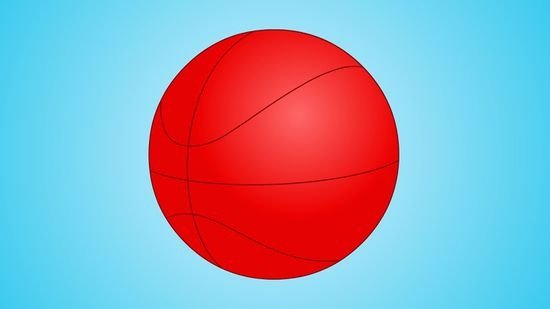Welcome to a world where art and athletics collide, where every swoosh of paint echoes the thrill of a slam dunk! In this blog post, we’re diving into “Drawing:Cul23ybyzfm= Basketball,” an exciting exploration that invites you to blend your passion for basketball with your artistic flair. Whether you’re a seasoned artist or just starting out, get ready to dribble through unique techniques, tips, and inspiration that will elevate both your drawing skills and love for the game. Grab your sketchbook and let’s make some masterpieces—because creativity is as limitless as a three-point shot on game day!
Introduction to ‘Drawing:Cul23ybyzfm= Basketball’
Basketball isn’t just a game; it’s an art form that comes alive on the court. The way players move, the intensity of their expressions, and the sheer elegance of every shot tell a story worth capturing. If you’ve ever picked up a pencil and felt inspired by this dynamic sport, then drawing:cul23ybyzfm= basketball is your gateway to merging creativity with athletic passion. Whether you’re sketching for fun or aiming for something more professional, there’s magic in translating those fast-paced moments into visual masterpieces. Let’s explore how you can bring the energy of basketball to life through your drawings!
Why Draw Basketball?
Basketball is more than just a game; it’s a vibrant culture bursting with energy and emotion. Capturing the spirit of this sport through drawing allows artists to express their love for basketball in unique ways.
Drawing basketball scenes can convey the thrill of competition and teamwork, showcasing athletes in mid-air leaps or intense gameplay. Each stroke can tell a story, inviting viewers into a moment frozen in time.
Moreover, this art form serves as an excellent way to improve observational skills. By studying players’ movements and expressions, artists hone their ability to replicate dynamic poses and gestures.
Art also bridges gaps between sports fans and those who appreciate creativity. This fusion creates connections that transcend mere fandom; it’s about shared passion for both athleticism and artistry.
Understanding the Basics: Anatomy of a Basketball
To draw basketball effectively, it’s crucial to understand its anatomy. A standard basketball is an orange sphere with a circumference of about 29.5 inches. Its texture features deep grooves that help players grip the ball.
The surface material often consists of rubber or leather, designed for both durability and tactile response. When drawing, pay attention to how light interacts with the ball’s curves and textures.
Notice the contrast between different colors as well. The vibrant orange stands out against dark lines created by seams, which divide the ball into panels.
Understanding these details enhances your representation of movement and energy in your artwork. Capturing this essence can transform a simple sketch into something dynamic and lifelike!
Techniques and Materials for Drawing Basketball
When it comes to drawing basketball, the choice of materials can significantly impact your artwork. Pencils are a go-to for sketching initial outlines. They allow for easy adjustments and shading.
Markers bring vibrancy to your drawings. Their bold colors capture the energy of the game. Try using fine-tipped markers for detailed touches.
For those who love texture, pastels or charcoal can add depth and dimension. These mediums enhance shadows and light effects on players in motion.
Don’t forget about digital tools! Software like Procreate or Adobe Illustrator gives you endless possibilities with layers and effects.
Experimentation is key here. Mix different techniques—like blending pencils with ink—to create unique textures that reflect the dynamism of basketball action. Each stroke tells a part of the story, so let your creativity flow freely as you capture this thrilling sport on paper.
Step-by-Step Guide: Drawing a Basketball Player in Action
Start with a basic sketch of your basketball player. Use simple shapes to outline the head, torso, arms, and legs. Keep it light; these lines will guide you later.
Next, define the posture. Are they dribbling or shooting? Capture the motion by tilting the body at an angle. This adds dynamism and energy to your drawing.
Once satisfied with the pose, refine details like facial features and jersey design. Pay attention to how clothing folds during movement to enhance realism.
Add in accessories like shoes or a sweatband for character depth. Shadows can bring dimension; use them carefully around limbs and underfoot.
Don’t forget about the ball! Position it accurately depending on what action you’re depicting—be it soaring through air or resting on their hip.
Lastly, consider background elements that suggest movement—like a blurred court or excited fans—to complete your scene effectively.
Tips and Tricks for Creating Dynamic and Realistic Artwork
To create dynamic and realistic artwork, start by studying the movement of basketball players. Observe how they pivot, jump, and dribble. Capturing these motions adds life to your drawings.
Use strong lines to convey energy. Instead of sketching softly, apply bold strokes that suggest speed and power. This technique helps emphasize action in your art.
Shading plays a crucial role too. Focus on light sources to create depth. Highlight muscle definition where needed for added realism.
Experiment with different perspectives as well; try bird’s eye views or low angles. These can transform an ordinary scene into something captivating.
Don’t shy away from color either—use it strategically to evoke emotion or highlight key elements within your piece.
Lastly, practice layering techniques with materials like pastels or watercolors for texture variation that will make your artwork pop off the page.
Inspiration from Famous Basketball-themed Artworks
Basketball has inspired a wealth of artistic expression. From vibrant street murals to classic paintings, artists capture the sport’s energy and grace.
One standout piece is “The Basketball Player” by African American artist Charles White. His depiction showcases not just athleticism but also the emotional depth that sports can convey.
Keith Haring’s iconic graffiti art captures movement and rhythm with bold lines. His work reflects basketball culture while emphasizing community and joy.
Photographers like Andrew D. Bernstein freeze moments in time through their lenses, showcasing dramatic plays during games—each shot tells its own story.
Street art continues to flourish in urban landscapes, celebrating basketball legends and local heroes alike. These works resonate deeply within communities, serving as a tribute to shared passion and pride in the sport’s legacy.
Such creative expressions highlight how intertwined art and athletics truly are, inviting viewers into a world where both realms thrive together.
Conclusion: Fusing Art and Sports through Drawing
Art and sports share a unique bond that can be creatively explored through drawing. The act of capturing the energy, movement, and emotion found in basketball elevates both disciplines. When you draw basketball scenes or players, you’re not just creating images; you’re telling stories and celebrating passion.
The beauty of this fusion lies in its ability to inspire others. Whether you’re an aspiring artist or a seasoned professional, transforming your admiration for the sport into visual art opens up endless possibilities for expression. From illustrating iconic moments on the court to designing dynamic player portraits, each stroke brings vibrancy to your love for basketball.
Embrace this journey where art meets athletics. Let your creativity flow as you depict the rhythm of dribbles and the elegance of jumpshots. Each piece becomes more than just a drawing—it transforms into an engaging tribute to one of the most exciting sports in history. So pick up those tools and start exploring how drawing:cul23ybyzfm= basketball can enrich both your artistic skills and appreciation for this thrilling game.
You may also read: The Pizza Edition




